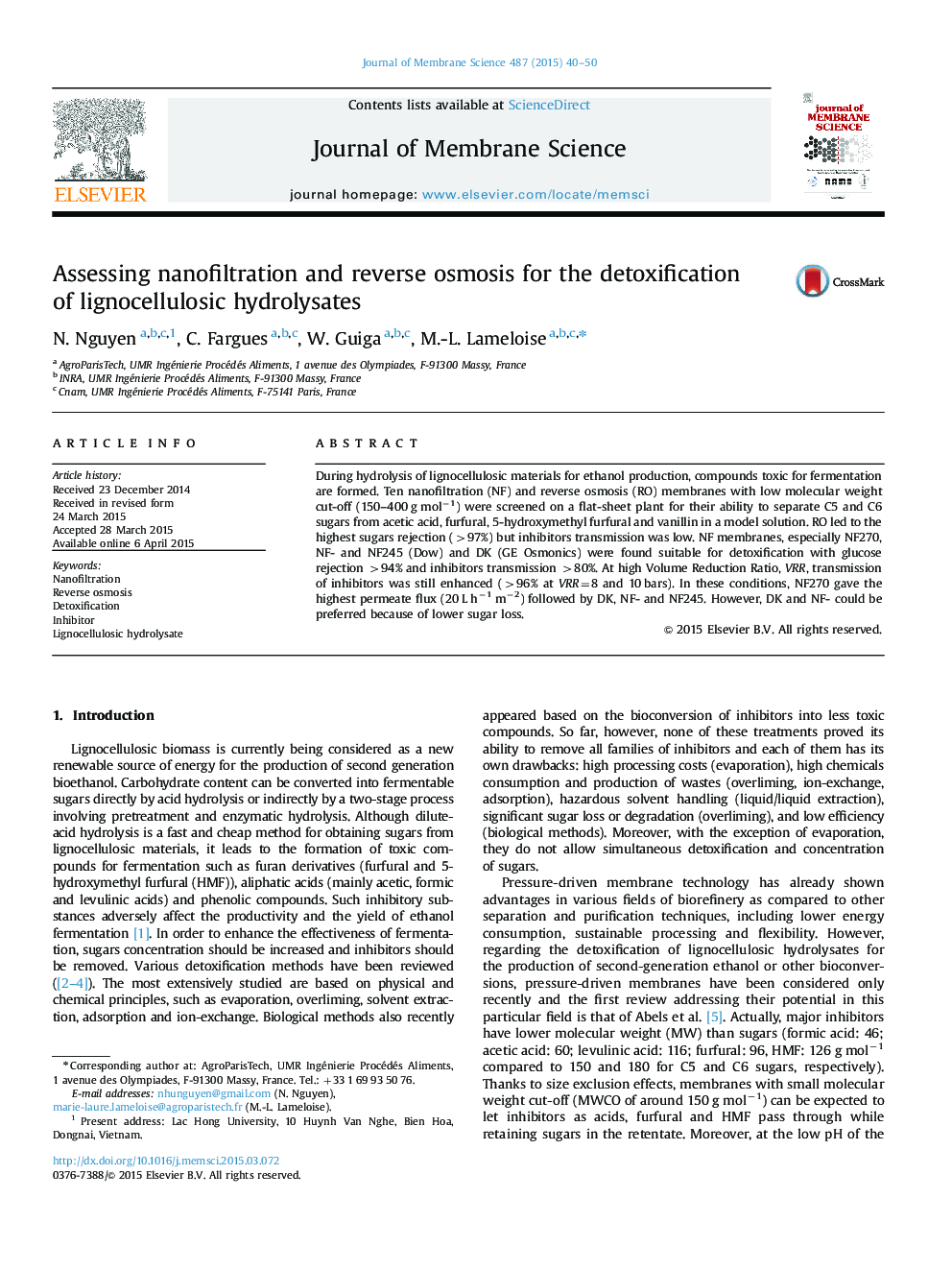| Article ID | Journal | Published Year | Pages | File Type |
|---|---|---|---|---|
| 7021297 | Journal of Membrane Science | 2015 | 11 Pages |
Abstract
During hydrolysis of lignocellulosic materials for ethanol production, compounds toxic for fermentation are formed. Ten nanofiltration (NF) and reverse osmosis (RO) membranes with low molecular weight cut-off (150-400 g molâ1) were screened on a flat-sheet plant for their ability to separate C5 and C6 sugars from acetic acid, furfural, 5-hydroxymethyl furfural and vanillin in a model solution. RO led to the highest sugars rejection (>97%) but inhibitors transmission was low. NF membranes, especially NF270, NF- and NF245 (Dow) and DK (GE Osmonics) were found suitable for detoxification with glucose rejection >94% and inhibitors transmission >80%. At high Volume Reduction Ratio, VRR, transmission of inhibitors was still enhanced (>96% at VRR=8 and 10 bars). In these conditions, NF270 gave the highest permeate flux (20 L hâ1 mâ2) followed by DK, NF- and NF245. However, DK and NF- could be preferred because of lower sugar loss.
Related Topics
Physical Sciences and Engineering
Chemical Engineering
Filtration and Separation
Authors
N. Nguyen, C. Fargues, W. Guiga, M.-L. Lameloise,
